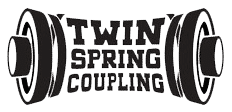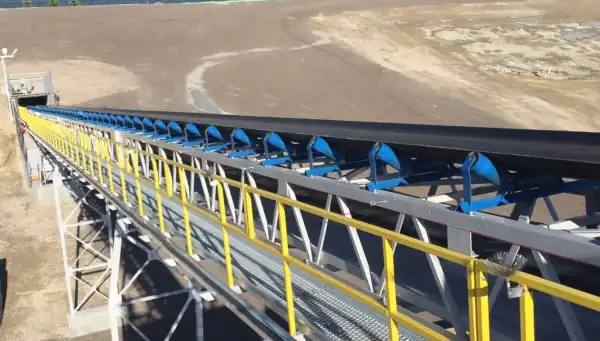How to Choose the Right Jaw Coupling for Heavy Mining Machinery
Table of Contents
When it comes to heavy mining machinery, every component plays a crucial role in ensuring smooth operation and minimizing costly downtime. One of the most important components is the jaw coupling, a power transmission coupling designed to absorb shock and misalignment while transmitting torque between two shafts. Selecting the right jaw coupling for your mining equipment can make a significant difference in your machine’s performance and longevity.
This guide will provide a comprehensive look at the key factors to consider when selecting jaw couplings for heavy mining machinery, including load capacity, misalignment, and shock absorption.
What is a Jaw Coupling?
A jaw coupling consists of two metal hubs with jaws that interlock through an elastomeric element, called a “spider.” The spider sits between the hubs, absorbing shock and compensating for small misalignments, making jaw couplings ideal for heavy-duty applications like mining. Their simplicity, durability, and ability to handle moderate misalignment and vibration are key reasons they are used in the mining industry.
Key Factors to Consider When Selecting a Jaw Coupling for Mining
1. Load Capacity
One of the first things to consider when selecting a jaw coupling is the load capacity of your machinery. Mining equipment typically operates under extreme conditions and high torque loads, so it is essential to choose a jaw coupling that can handle the heavy load without slipping or failing. Always check the torque rating of the coupling to ensure it matches or exceeds the operating torque of your equipment.
In mining applications, you’ll often encounter variable loads, especially during drilling, excavation, or hauling, which can stress your power transmission components. Selecting a jaw coupling that has a sufficient load capacity ensures that your machinery runs smoothly even under maximum stress conditions.
Tip: Always consult your machinery’s torque requirements before choosing a coupling. It’s better to overestimate the load than to risk failure under high-pressure conditions.
2. Misalignment Compensation
Mining equipment is subjected to harsh environments and rugged terrain, leading to frequent shaft misalignment. Shaft misalignment is inevitable in any machinery, but in the mining industry, misalignment can increase due to the constant motion and vibrations of heavy machinery. A high-quality jaw coupling should be able to accommodate angular, parallel, and axial misalignment to ensure continuous operation without damaging the equipment.
Misalignment leads to undue stress on the coupling, causing wear and tear on the machinery’s bearings and seals. Over time, this can cause unexpected downtimes and expensive repairs. When selecting a jaw coupling for mining equipment, ensure the design compensates for misalignment, preventing unnecessary damage to other components.
Tip: Choose a jaw coupling that offers a balance between flexibility and rigidity to handle misalignment effectively.
3. Shock Absorption
Mining is a demanding industry where machines are exposed to high levels of shock and vibration. These forces can damage the equipment if not managed properly. One of the primary benefits of jaw couplings is their ability to absorb shocks and vibrations, reducing the impact on connected components such as motors, gearboxes, and pumps.
The spider, or elastomeric element, is key in absorbing and dampening shock loads. Selecting the right spider material is critical. Spiders are available in different durometers (hardness), allowing you to tailor the coupling to specific applications. For mining, where shock absorption is paramount, a softer spider material can help reduce vibrations and prolong the life of your machinery.
Tip: Opt for a jaw coupling with a spider made from durable and flexible materials like urethane, as it offers superior shock absorption properties.
4. Durability and Material Selection
Mining operations are known for their abrasive environments—dust, dirt, and other particles can easily compromise the integrity of poorly designed couplings. Selecting jaw couplings made from high-quality, corrosion-resistant materials ensures they can withstand these harsh conditions.
Common materials for jaw couplings include aluminum, steel, and stainless steel. Each material offers different levels of strength and corrosion resistance. In mining, it’s critical to use a material that will not degrade over time due to environmental exposure. Stainless steel is often the best choice due to its superior corrosion resistance, though it may be more costly than other options.
Tip: Stainless steel couplings are an excellent investment for mining applications as they are resistant to the abrasive and corrosive environments typically found in mines.
5. Maintenance Requirements
Ease of maintenance is another important factor when choosing jaw couplings. In mining operations, machines are expected to operate with minimal downtime, and couplings are no exception. Jaw couplings are generally easy to install and maintain, making them a popular choice in mining. They require minimal lubrication and can be inspected for wear without completely disassembling the system.
However, regular inspections of the spider element are essential as this is the component most prone to wear. If the spider deteriorates, it can result in poor shock absorption and increased misalignment, leading to system failures. Replacing worn spiders is a simple maintenance task, but it can prevent significant downtime and repair costs.
Tip: Incorporate a regular maintenance schedule for your couplings, including routine checks of the spider’s condition to avoid unexpected breakdowns.
6. Customization Options
Given the unique challenges faced in mining operations, many jaw couplings can be customized to meet specific application requirements. From different spider materials to varying hub sizes and configurations, jaw couplings can be tailored to suit your equipment’s precise needs.
Some suppliers offer modifications like special coatings to resist wear in abrasive environments, or enhanced spider designs for improved shock absorption. Customization options can give you an edge in ensuring your machinery operates at peak efficiency in the toughest conditions.
Tip: Consult with your coupling supplier to discuss any special requirements your machinery may have and explore available customization options.
7. Brand Reputation and Reliability
When selecting jaw couplings for your mining machinery, it is essential to choose from trusted and well-established brands known for delivering high-quality products. Reliable brands not only provide superior durability and performance but also offer support and replacement parts when needed.
Brands like Lovejoy, Rexnord, and SKF have a strong reputation in the mining industry for delivering couplings that meet the demands of heavy machinery. Choosing a reputable brand ensures that you are getting a product designed to withstand the unique challenges of mining operations.
Tip: Partner with brands that offer excellent customer support and warranties to ensure you are covered if any issues arise with your couplings.
CTA: Ensure the Longevity of Your Mining Equipment
Choosing the right jaw coupling for your heavy mining machinery is critical to reducing downtime, improving efficiency, and extending the lifespan of your equipment. At twinspringcoupling.com, we provide high-quality jaw couplings from trusted brands like Lovejoy, Rexnord, and SKF. Browse our wide selection of power transmission couplings on our website to find the perfect match for your mining operations. Don’t wait for breakdowns—contact us today to learn more about how we can help you keep your equipment running smoothly!

